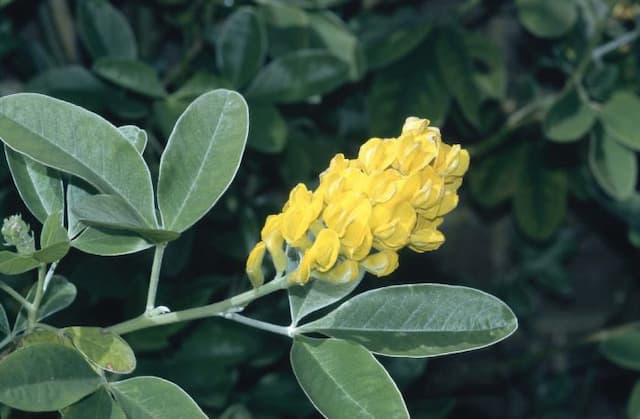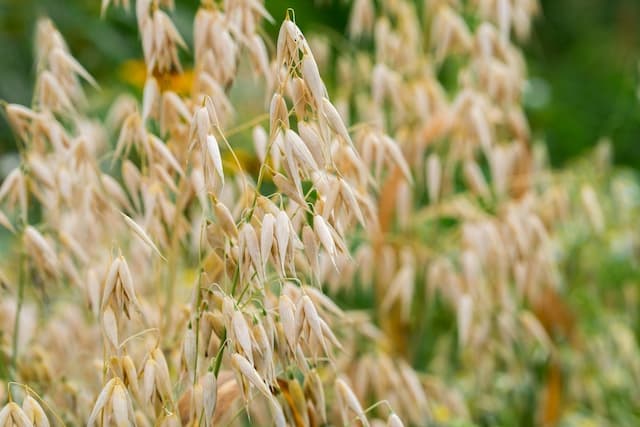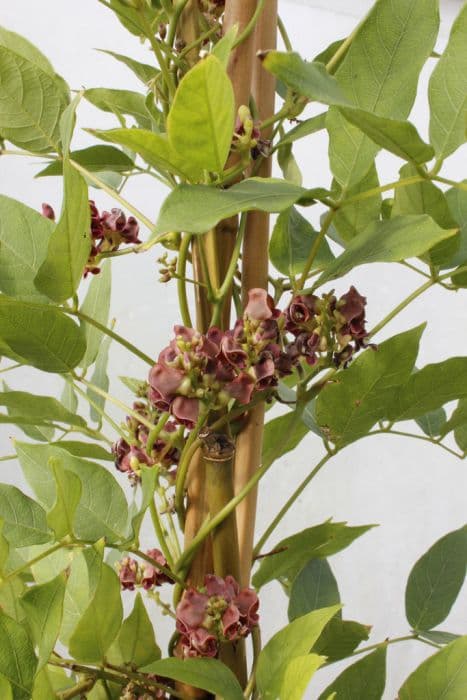Black locust Robinia pseudoacacia



ABOUT
Robinia pseudoacacia, also known as False acacia and Black locust, is a deciduous tree that can grow up to 80 feet tall with a trunk diameter of 2-4 feet. The tree has a broad, oval-shaped canopy that can span up to 50 feet. The bark is grayish-brown and deeply furrowed, forming broad, flat-topped ridges. The branches are stout, zigzagging, and covered in sharp, woody thorns that can be up to 3 inches long.
The leaves are compound and alternate, typically measuring 8-14 inches long and composed of 9-19 oval-shaped leaflets that are 1-2 inches long. The leaflets are dark green and smooth on the upper surface and paler and hairy on the underside. In the fall, the leaves turn a bright, clear yellow color.
The flowers of Robinia pseudoacacia are fragrant and showy, appearing in late spring to early summer in large, drooping clusters that can measure up to 8-10 inches long. The individual flowers are pea-like and white, with a yellow blotch on the upper petal. The fruit of the tree is a brown, flat, elongated pod that can be up to 4-5 inches long and contains several small, brown seeds.
About this plant
 Names
NamesFamily
Araceae
Synonyms
False acacia, Bastard acacia, Black locust, Common robinia, Fragrant white locust, Locust, Yellow locust
Common names
Robinia pseudoacacia, Philodendron hederaceum, Philodendron scandens, Philodendron hederaceum var. hederaceum, Philodendron cuspidatum, Philodendron micans
 Toxicity
ToxicityTo humans
Robinia pseudoacacia contains toxic compounds in its leaves, bark, and seeds. The main toxin in Black Locust is a chemical called robin, which can cause symptoms such as nausea, vomiting, diarrhea, and abdominal pain if ingested.
The toxin can also cause skin irritation in some people. Ingestion of large amounts of the plant can result in more severe symptoms such as low blood pressure, slowed breathing, and seizures.To pets
Black Locust is toxic to a variety of animals, including horses, cattle, and goats. The main toxic compound in the plant is the same chemical, robin, that affects humans. Ingestion of the plant can cause symptoms such as colic, diarrhea, sweating, weakness, and difficulty breathing in animals. In severe cases, ingestion can be fatal.
 Characteristics
CharacteristicsLife cycle
Perennials
Foliage type
Deciduous
Color of leaves
Green
Flower color
White
Height
Up to 80 feet
Plant type
Tree
Hardiness zones
3
Native area
Central America and the Caribbean
Benefits
 General Benefits
General BenefitsBlack Locust is a nitrogen-fixing tree, meaning it can take atmospheric nitrogen and convert it into a form that can be used by plants in the soil.
The nitrogen-fixing ability of Black Locust can improve the soil quality in areas where it is planted, making it a useful plant for reforestation or as a cover crop.
The wood of Black Locust is strong and durable, making it useful for construction and fence posts.
The attractive flowers of Black Locust make it a popular ornamental tree in landscaping.
The fragrant flowers of Black Locust are a good source of nectar and pollen for bees, making it an important plant for pollinator conservation.
The dense foliage and strong wood of Black Locust provide good shelter and nesting sites for a variety of wildlife, such as birds and squirrels. Medical Properties
Medical PropertiesThe bark of Black Locust has traditionally been used to treat respiratory issues such as coughs and bronchitis.
Black Locust has been used to treat digestive issues such as diarrhea, dysentery, and stomach pain.
The bark of Black Locust has been used to treat skin disorders such as eczema and psoriasis.
Black Locust has anti-inflammatory properties and has been used to treat conditions such as arthritis and joint pain.
Black Locust has antimicrobial properties and has been used to treat infections such as ear infections and wounds.
Black Locust has diuretic properties and has been used to treat conditions such as edema and hypertension.
Be careful, because the plant is poisonous. Do not use this herb for medicinal purposes without consulting your doctor. Other Uses
Other UsesBlack Locust wood is known for its durability and resonance, making it a popular choice for constructing musical instruments such as guitars, banjos, and violins.
Black Locust wood is extremely durable and resistant to rot, making it a popular choice for fence posts and other outdoor construction projects.
The plant produces a fragrant, light-colored honey that is highly sought after by beekeepers.
Its wood is sometimes used to make furniture, particularly outdoor furniture, because of its strength and resistance to weather.
The small leaves and attractive bark of Black Locust make it a popular choice for bonsai enthusiasts.
Interesting Facts
 Plant Symbolism
Plant SymbolismBlack Locust is associated with several symbolic meanings, including renewal, regeneration, and protection. The tree is known for its hardiness and ability to thrive in challenging environments, which has led to its association with resilience and perseverance.
In some cultures, the Black Locust is also seen as a symbol of protection, as its dense, thorny branches and quick growth rate can make it a formidable barrier against intruders.
The tree's flowers, which are often used in traditional medicine, are also associated with healing and purification.
Overall, the Robinia pseudoacacia is a complex and multifaceted symbol that represents strength, resilience, and protection, as well as healing and renewal.
 Water
WaterRobinia pseudoacacia is a drought-tolerant plant that does not require much watering once established. When watering, ensure that the soil is well-drained and avoid overwatering, as this can lead to root rot. Water the plant deeply once a week during dry periods, and allow the soil to dry out slightly between waterings.
 Light
LightRobinia pseudoacacia prefers full sun and can tolerate partial shade. It is important to provide the plant with at least 6 hours of direct sunlight per day for optimal growth and flowering.
 Temperature
TemperatureRobinia pseudoacacia is a hardy tree that can tolerate a wide range of temperatures. It is typically grown in USDA Hardiness Zones 4-8, which have an average minimum winter temperature range of -30 to 20 degrees Fahrenheit. The tree can tolerate extreme heat, but may require additional watering during hot and dry periods to prevent stress.
 Pruning
PruningRobinia pseudoacacia requires little pruning, but it can benefit from light pruning to maintain its shape and remove dead or damaged branches. Prune the tree in late winter or early spring, before new growth appears. Use clean, sharp pruning shears to make cuts just above a healthy bud or branch junction. Avoid removing more than one-third of the tree's branches at a time, as this can stress the plant and affect its growth and health.
 Soil
SoilRobinia pseudoacacia prefers well-draining soil that is moderately fertile and slightly acidic to neutral in pH. A pH range of 6.0 to 7.5 is ideal for this plant.
It can grow in a range of soil types, including sandy, loamy, and clay soils, as long as the soil is well-draining and not waterlogged. Humidity & Misting
Humidity & MistingRobinia pseudoacacia is a hardy plant that can tolerate a range of humidity levels. It prefers average to low humidity, so it does not require additional humidity in most indoor environments.
In outdoor environments, it can tolerate high humidity levels but may be susceptible to fungal diseases if it is planted in an area with poor air circulation. Suitable locations
Suitable locationsIndoor
Not growing
Outdoor
All year round
Hardiness zone
USDA 4 - 10
 Life cycle
Life cycleIt begins its life as a seedling and grows quickly, reaching a height of 20 to 30 feet in just a few years. As it matures, it can grow up to 80 feet tall and 50 feet wide with a broad, spreading crown.
In the spring, Robinia pseudoacacia produces fragrant, pea-like flowers that are typically white or pink and grow in long, drooping clusters. The flowers are followed by long, flat seed pods that can reach up to 8 inches in length. The pods ripen in the fall and turn brown, releasing small, hard seeds that are spread by wind or animals.
As a deciduous tree, Robinia pseudoacacia drops its leaves in the fall and becomes dormant for the winter months. In the spring, it produces new leaves and begins to grow again. The tree's bark is gray and deeply furrowed, with ridges and furrows that become more pronounced as the tree ages. Overall, Robinia pseudoacacia is a hardy and long-lived tree with a beautiful and fragrant display of flowers in the spring. Propogation
PropogationPropogation time
Spring, summer, fall
Seeds:
The seeds should be collected from the pods as they turn brown and start to dry out in the late fall. Seeds should be scarified or mechanically nicked before planting. Sow the seed in the fall or early spring. If sowing in the fall, the seed can be sown directly into the soil. If sowing in the spring, the seeds should be started indoors 8-10 weeks before the last frost date.
Hardwood cuttings:
The cuttings should be taken from the current year's growth and should be approximately 8-12 inches in length. The cuttings should be taken in the late fall after the leaves have fallen off the tree. Dip the bottom of the cutting in rooting hormone and plant in a well-draining soil mix. Keep the soil moist and the cutting in a warm area until roots form, usually within 2-3 months.
 Pests
PestsSpider mite, Scale insects, Aphid, Japanese beetle
 Diseases
DiseasesVerticillium wilt, Root Rot, Powdery mildew, Leaf spot, Rust, Canker









